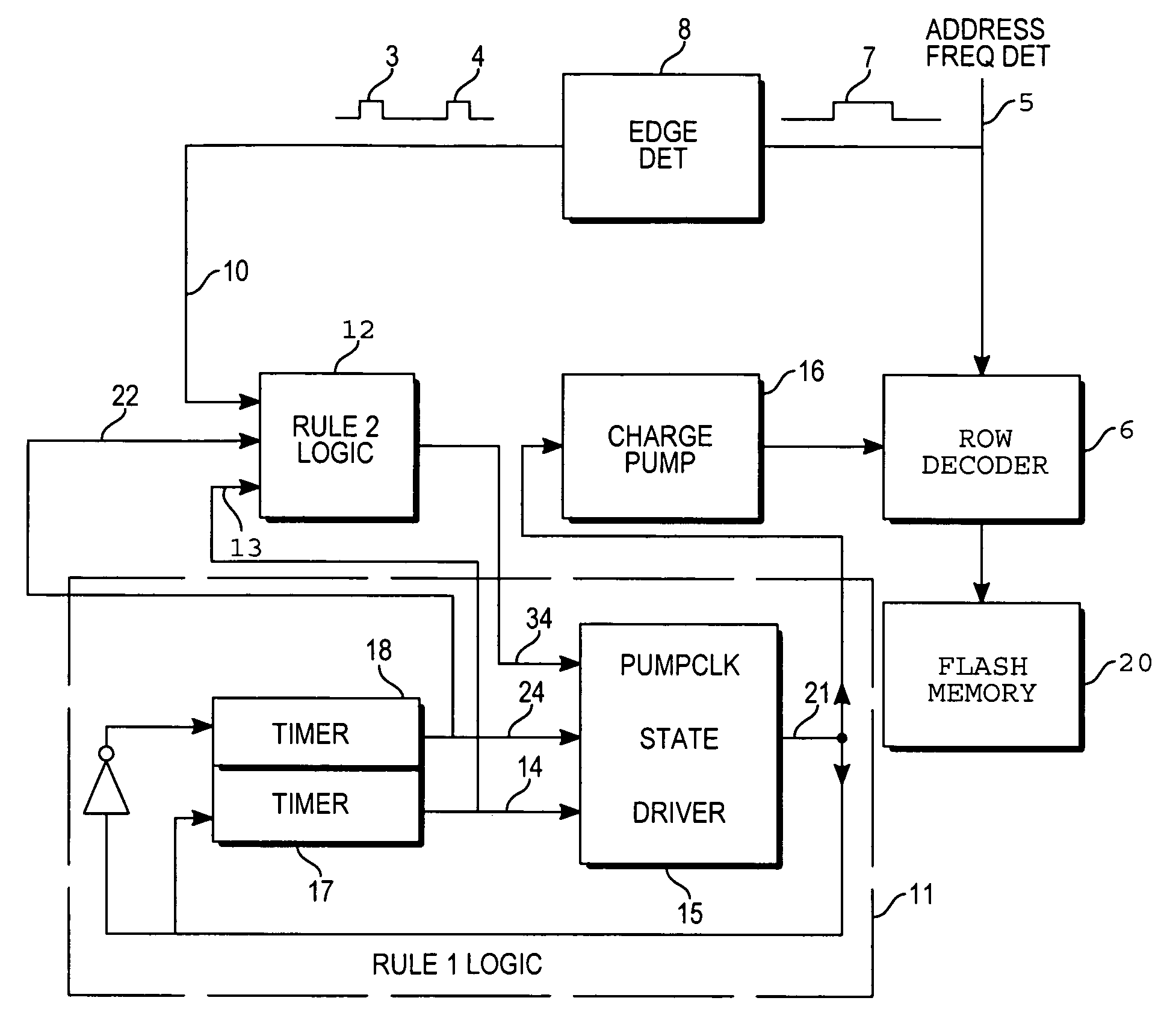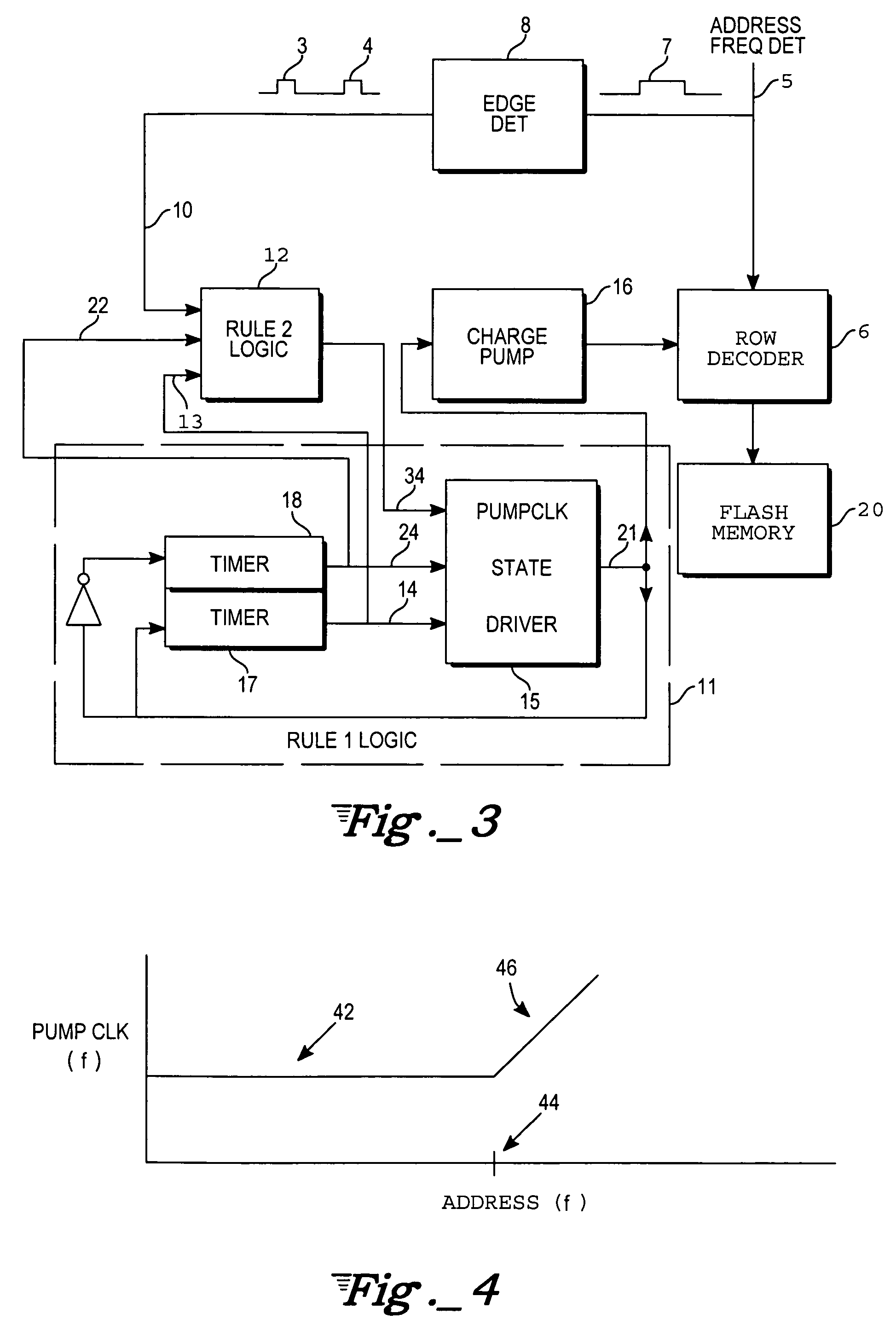Charge pump clock for non-volatile memories
a charge pump and non-volatile memory technology, applied in pulse manipulation, pulse technique, instruments, etc., can solve the problems of insufficient read voltage supplied by the charge pump, inability to regulate voltage, read error, etc., and achieve the effect of less power consumption, less cost and less power
- Summary
- Abstract
- Description
- Claims
- Application Information
AI Technical Summary
Benefits of technology
Problems solved by technology
Method used
Image
Examples
example no.1
EXAMPLE NO. 1
[0046]FIG. 6A depicts readclk signal 162 cycling at a frequency that is higher than FMIN=1 / (2×TD), whereas the duty cycle of readclk is much less than 50%:
readclk_frequency≧FMIN=1 / (2×TD)
and
readclk_duty_cycle<50% (9)
[0047]The usage of the charge pump clock 100 of FIG. 5 in the charge pump instead of the usage of the conventional oscillator results in generating of the pumpclk signal 164 for the wordline pump which has the same frequency as the frequency of readclk, but with improved duty cycle:
pumpclk_frequency=readclk_frequency
and
pumpclk_duty_cycle>readclk_duty_cycle. (10)
example no.2
EXAMPLE NO. 2
[0048]FIG. 6B depicts readclk signal 172 cycling at a frequency that is higher than FMIN=1 / (2×TD), whereas the duty cycle of readclk is much more than 50%:
readclk_frequency≧FMIN=1 / (2×TD)
and
readclk_duty_cycle>50% (11)
[0049]The usage of the charge pump clock 100 of FIG. 5 in the charge pump instead of the usage of the conventional oscillator results in generating of the pumpclk signal 174 for the wordline pump which has the same frequency as the frequency of readclk, but with improved duty cycle:
pumpclk_frequency=readclk_frequency
and
pumpclk_duty_cycle
example no.3
EXAMPLE NO. 3
[0050]FIG. 6C depicts readclk signal 182 that is not cycling at all. However, the charge pump clock 100 of FIG. 5 will generate pumpclk signal 184 for the wordline pump at the frequency FMIN=1 / (2×TD)
readclk_frequency=0;
pumpclk_frequency=FMIN=1 / (2×TD). (13)
PUM
 Login to View More
Login to View More Abstract
Description
Claims
Application Information
 Login to View More
Login to View More - R&D
- Intellectual Property
- Life Sciences
- Materials
- Tech Scout
- Unparalleled Data Quality
- Higher Quality Content
- 60% Fewer Hallucinations
Browse by: Latest US Patents, China's latest patents, Technical Efficacy Thesaurus, Application Domain, Technology Topic, Popular Technical Reports.
© 2025 PatSnap. All rights reserved.Legal|Privacy policy|Modern Slavery Act Transparency Statement|Sitemap|About US| Contact US: help@patsnap.com



